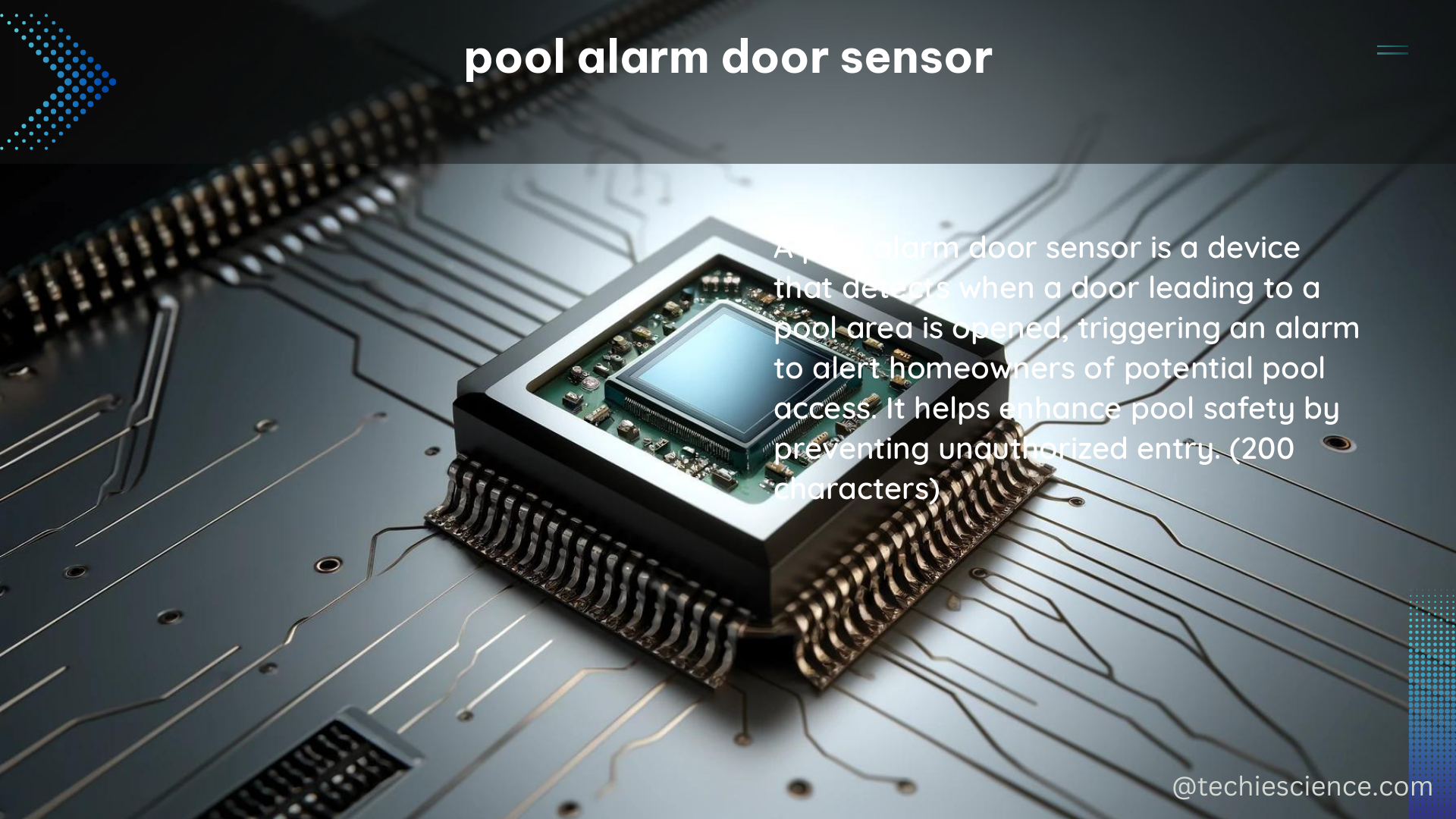A pool alarm door sensor is a crucial safety device designed to alert homeowners when a door or gate leading to a swimming pool is opened, helping to prevent accidental drownings, especially among young children. This comprehensive guide delves into the technical specifications and essential considerations for a successful DIY installation of a pool alarm door sensor.
Technical Specifications for Pool Alarm Door Sensor
-
Sound Pressure Rating: The alarm should have a minimum sound pressure rating of 85 dBA at 10 feet, as per the UL 2017 General-Purpose Signaling Devices and Systems, Section 77. This ensures the alarm is loud enough to be heard and draw immediate attention.
-
Duration: The alarm should sound continuously for a minimum of 30 seconds within 7 seconds after the door is opened. This provides ample time for the homeowner to respond and take appropriate action.
-
Sound Characteristics: The sound of the alarm should be distinctive from other household sounds, such as smoke alarms, telephones, and doorbells. This unique auditory signature helps to quickly identify the pool alarm and differentiate it from other alerts.
-
Reset Feature: The alarm should automatically reset under all conditions and should have manual means, such as touchpads or switches, to temporarily deactivate the alarm for a single opening of the door from either direction. This deactivation should last for no more than 15 seconds, ensuring the alarm remains active and ready to respond to subsequent door openings.
-
Deactivation Switch Location: The deactivation touchpads or switches should be located at least 54 inches above the threshold of the door. This placement helps to prevent young children from easily accessing and disabling the alarm.
-
Wireless Communication: The sensor should be capable of wireless communication with the alarm system, utilizing protocols such as Z-Wave or Zigbee. This allows for a clean, unobtrusive installation and eliminates the need for complex wiring.
-
Sensitivity: The sensor should be sensitive enough to detect the opening of the door and/or screen, triggering the alarm within the specified timeframe. This ensures the system responds promptly to any potential pool access.
-
Compatibility: The sensor should be compatible with various home automation systems, allowing for integration with existing security and home automation setups. This enables seamless integration and centralized control of the pool alarm system.
-
Power Source: The sensor should be battery-powered, ensuring continuous operation even in the event of a power outage. This redundancy is crucial for maintaining pool safety during emergencies.
-
Durability: The sensor should be designed to withstand the elements, including exposure to water and UV radiation. This weatherproofing ensures the sensor remains functional and reliable in outdoor environments.
DIY Installation Considerations

For those considering a DIY installation of a pool alarm door sensor, it is essential to consider the following factors:
-
UL Compliance: If the installation requires UL compliance, it is recommended to consult with a licensed electrician to ensure proper adherence to safety standards. This helps to mitigate any potential legal or liability issues.
-
Building Code Compliance: It is crucial to understand local building codes and regulations regarding pool alarm installations. This may involve consulting with local government officials or a professional home inspector to ensure compliance and avoid any issues with the installation.
-
Integration with Existing Systems: When integrating the pool alarm door sensor with existing home automation or security systems, it is crucial to ensure compatibility and proper configuration to avoid any potential issues. Careful planning and testing are essential to ensure seamless integration.
-
Battery Life: Regularly checking and replacing the batteries in the sensor is necessary to ensure continuous operation and prevent false alarms due to low battery levels. Establishing a routine maintenance schedule is recommended.
-
Sensor Placement: Proper placement of the sensor is crucial to ensure accurate detection of door openings. This may involve adjusting the placement of the sensor or the door itself to optimize performance and minimize false triggers.
By understanding the technical specifications and considering the DIY installation factors, homeowners can ensure the successful and effective implementation of a pool alarm door sensor, providing an added layer of safety and peace of mind for their family.
References:
- Door Sensors as Pool Alarm
- Alarms on Doors that Have Access to a Pool
- CREIA Legislation – Pool Safety Act

The lambdageeks.com Core SME Team is a group of experienced subject matter experts from diverse scientific and technical fields including Physics, Chemistry, Technology,Electronics & Electrical Engineering, Automotive, Mechanical Engineering. Our team collaborates to create high-quality, well-researched articles on a wide range of science and technology topics for the lambdageeks.com website.
All Our Senior SME are having more than 7 Years of experience in the respective fields . They are either Working Industry Professionals or assocaited With different Universities. Refer Our Authors Page to get to know About our Core SMEs.